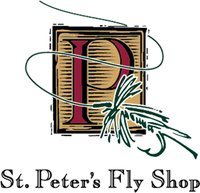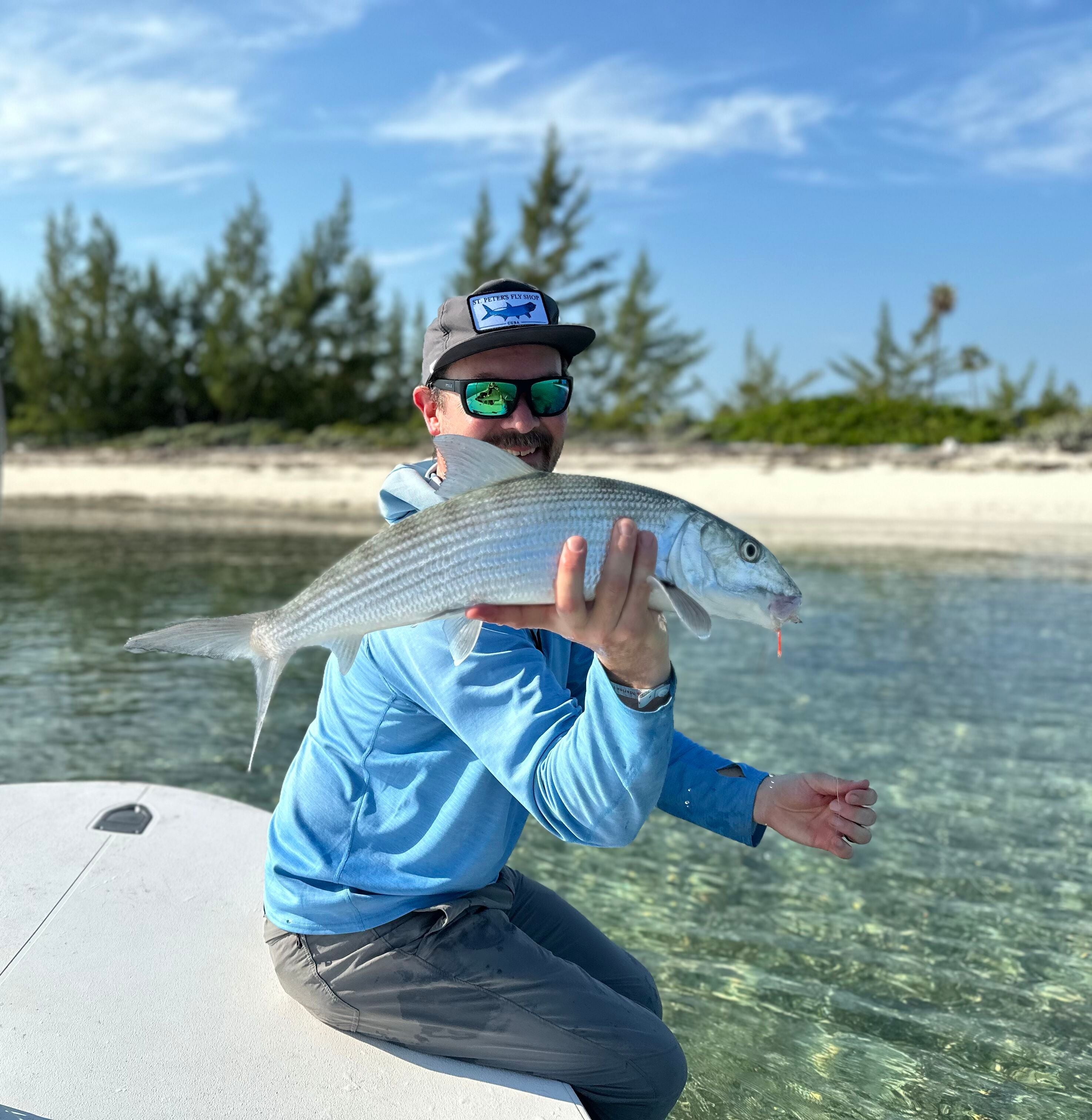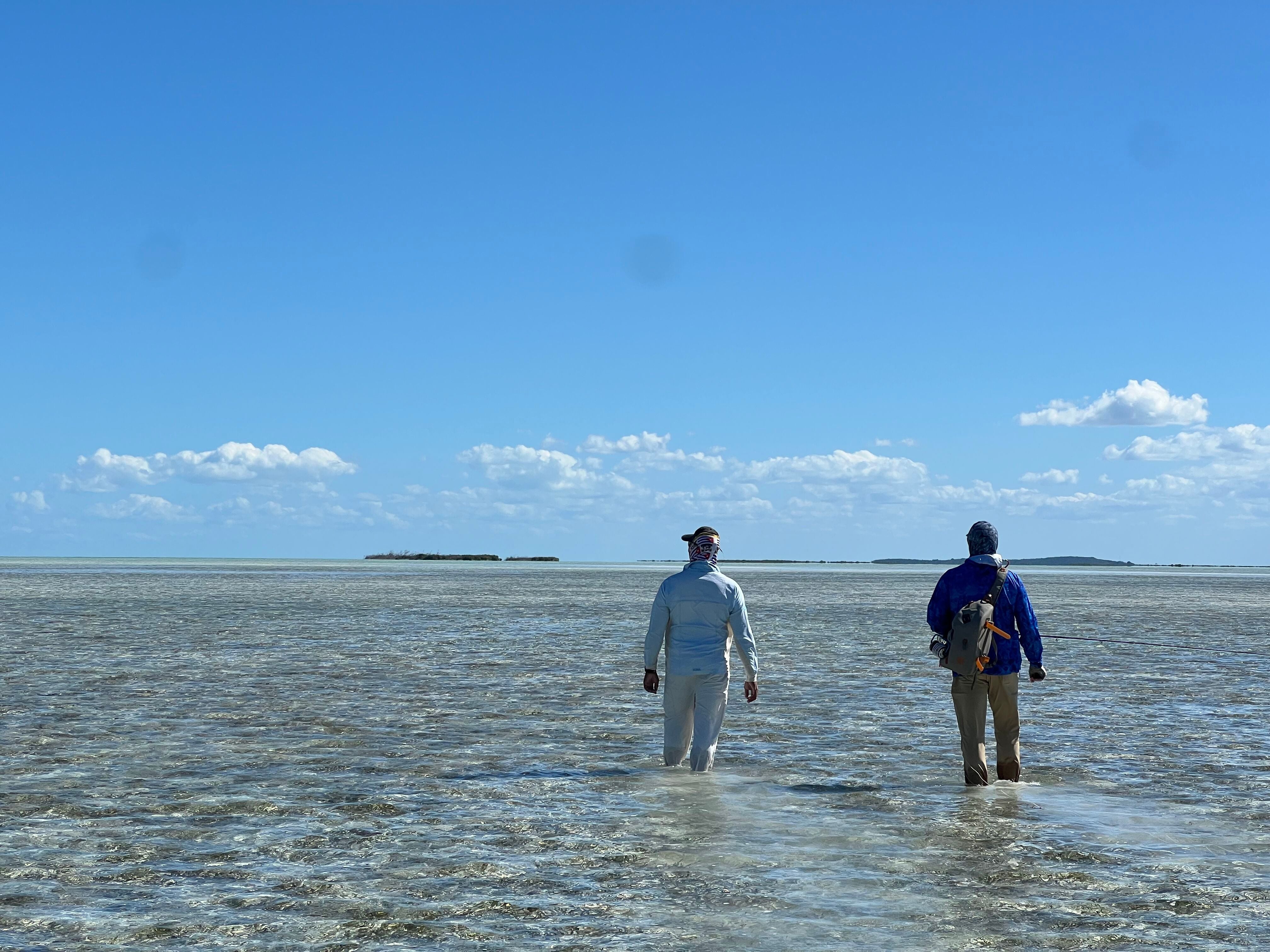Fly Fishing Cuba
How to Navigate Travel Logistics Assuring an Amazing Experience
By Grant Houx- St. Peter's Travel Coordinator
When it comes to fly fishing and travel, what is better than an adventure filled with expansive saltwater flats and plentiful fish? Combine this with amazing culture, great food, wonderful people, and a place unlike anywhere else in the world, and you have a journey that is hard to top. You may have guessed it, but I’m talking about Cuba. Cuba is a place that offers all those experiences and more. For these reasons, Cuba is unquestionably a top destination in our fly fishing travel program. In this blog, I’ll elaborate on the above details and why Cuba should be at the top of your list of fly fishing destinations. Additionally, I’ll cover how to travel to Cuba and what you need to know to make sure your trip is a success.
We at St Peter’s Fly Shop have been traveling, arranging, and taking clients to Cuba for almost a decade. I’ve been fortunate to be on the front end of our travels there, hosting 2 to 3 trips per year since we added it to our list of destinations. Avalon is the company that we have partnered with, and they control most all fly fishing access in Cuba. After visiting all of Avalon’s locations throughout the country, we as a shop have chosen to focus on what we consider to be their 2 best: Cayo Romano to the north and Jardines de la Reina(JDR) to the south. Though the destinations are very different, they’re both fantastic in their own ways. I will focus on more details about each destination below, but let’s first discuss the aspects of travel to Cuba.
TRAVEL
First and foremost, all travel we arrange to Cuba is legal, and we ensure the documents to follow mandates between the US and Cuba. Travel seems to be the largest barrier for most when it comes to visiting Cuba. We at St. Peter’s Fly Shop pride ourselves in making this process as easy and safe as possible. We’ll make sure you make it there and back legally, by assuring all proper paperwork is lined up and arranged by our travel experts. Admittedly, of all the destinations we travel to in the world to fly fish, Cuba does have some difficult logistics. This isn’t said to scare one from wanting to travel there, but rather to inform you that it does require crossing your t’s and dotting your i’s. Again, we will hold your hand through this whole process. In fact, these challenges are part of what makes Cuba such a special place. When less folks travel somewhere to fly fish, and when fish see less pressure, the fisheries tend to be that much better. It is also the reason many travelers choose St. Peter’s to help arrange their trips: we know how to navigate the logistics.
Now, let’s cover some of these logistics and discuss how to navigate them. I’ll note that in the last 10 years, 3 of which were heavily impacted by COVID, logistics have been constantly changing. Since we have multiple trips there a year, we are constantly studying Cuba travel and how to make sure our customers can navigate their way to this amazing destination and back to the States. We’ll handle travel logistics so customers can focus on what they are there to do: fly fish!
When it comes to traveling to Cuba there are a handful of documents and paperwork that you’ll need to legally enter the country. (Again, when you travel or book with St. Peter’s to Cuba, we make sure we are traveling legally and that all your paperwork will be organized.)
As of Nov 1st, 2022, here is the list of required documents:
-Passport- It must not expire for 6 months from the first day of your arrival to Cuba.
-Cuba Visa - can be obtained multiple ways, but normally we recommend ordering them through Cuba Travel Services at least 2 weeks prior to your trip
-Travel Affidavit- I’ll go into this document with a bit more detail because it’s the paperwork that explains our legal reason for traveling to Cuba. Currently, we are traveling under Humanitarian Projects. Let me explain how this makes your travel to Cuba legal. While in Cuba, Avalon works closely with an organization called Oceans of the Youth. Oceans of the Youth is the outfit that protects and researches Cuba’s flats and coastal waters. Each angler is required to count and keep track of fish caught each day. That info is passed to Oceans of the Youth to help them with fish population records. On top of that, while visiting Cuba, you’ll be required to attend an informative speech detailing the current status and future objectives of the marine area. By helping Oceans of the Youth, we are in the act of helping with Humanitarian Projects, therefore making our travel to Cuba legal. Prior to departing for Cuba, we’ll make sure you have the Travel Affidavit and Workshop Certificate to solidify legal travel to the country.
-Workshop Certificate. We arrange this for you through the Cuban outfitter. It defines your reason for visit and authorizes your travel.
-Vaccinations and COVID Test requirement. Currently Cuba isn’t requiring travelers to be vaccinated. COVID tests are not required to enter the country.
As of this moment, the above items are the travel requirements and logistics. Please be sure to check with us as requirements change, and we’ll be sure to get you the most up to date information prior to your trip.
TRAVEL ITINERARY
For all our clients headed to Cuba, we are very involved in making sure that each leg of the trip goes smoothly. Over the years, we’ve worked directly with Avalon and hundreds of clients. That repetitive process allows us to assure an easy, accurate, and stress-free travel experience. Most of your Cuba fly fishing trips are a 6 day / 7 night all-inclusive package. The all-inclusive part starts once you arrive at the lodge. These trips normally consist of arriving on a Saturday and departing the following Saturday.
Many travelers fly into a US connecting airport, normally Miami, 1 day prior (Friday) to arriving in Cuba. After overnighting in Miami, travelers catch a flight Saturday morning and arrive in Cuba. As of Nov 5th, 2022, airlines have opened flights to the city of Camagüey, which makes travel and shuttles much easier. Havana is an option, but the private shuttle to the lodge is longer and more expensive. After arriving in Camagüey, we catch a short, private 2 hour shuttle to get to the north or south coast. If you head to Cayo Romano, you’ll get settled into your accommodation. If you head south to Jardines de la Reina, you will load your mothership boat and start your 4 hour boat transfer to the atoll.
From that point, you start the first of your 6 fly fishing days on Sunday, with your last day being Friday. After the 6 days of fly fishing Cuba’s flats, travelers return through Camagüey. As long as time allows, we recommend spending a few hours in the vibrant city of Camagüey. If you want to extend your trip to experience more of what Cuba has to offer, we’d be happy to help with suggestions. Most travelers return to Miami and then their final destination on Saturday. If you’d like more information about the travel schedule and logistics, please reach out to us at St. Peter’s.
For details on the daily routine, here’s a typical day of fly fishing in Cuba:
6:00am-coffee is available
7:00am-breakfast
7:45am- meet your guide and head out to the flats.
8am-4:30pm - fishing - each day a lunch will be prepared to have on the water mid-day
5:00- happy hour and appetizers
6:30- dinner
CUBA FLY FISHING LODGE LOCATIONS
Cayo Romano (formerly Cayo Cruz)
Cuba has a magnitude of fisheries around the island, but none are better than Cayo Romano when it comes to permit and bonefishing. Massive white sand flats offer the ideal habitat for these fish and provide anglers magnificent sight casting opportunities. Spend your day targeting solos or enormous schools of bonefish that average in the 4-5lb range with the larger fish being up to 8lbs. These aren’t your typical Caribbean bonefish. Cuban bones are much larger in size and more eager to chase down a fly. Unlike most places, permit are a normal, daily encounter. If you’re persistent, you’ll be sure to get shots at the most trophied of flats species. Watch for waking nervous water, but even better, don’t ever pass a stingray without precise focus as commonly the permit are hovering on them like a magic carpet ride.
Cayo Romano accommodations are not your typical fishing lodge set up. Due to this, we believe Cayo Romano is perfect for anglers and non-anglers alike. Guests are set up in a brand new 4-star hotel ideally located within a stone’s throw of the flats. The hotel has multiple restaurant concepts, open bar areas, a gym, and spa for those that want a relaxing message. After a day of fishing, soak in the beachfront ocean or one of the multiple swimming pools. There’s no lack of entertainment as the hotel sets up local acts and shows each evening to give a taste of local culture. Internet service is available at the touch of a button. For more details and pricing click here.
JDR is an archipelago on the South side of Cuba that offers one of the most protected and diverse biospheres in the world. The fishery and dive operations at JDR are on another level. In addition to the main flat’s trio (bonefish, permit, and tarpon), on any given day you can catch more species than you can count on your hands. JDR is perfect for beginning saltwater anglers as well. On the other hand, if you’re a seasoned veteran of the saltwater game, it’s hard to say there’s a better place to get a grand slam. If you can hook the prized permit, then the other species are almost a guarantee.
The accommodations are based on a live-aboard mothership that allows you to be situated as close to the flats as possible. The cuisine is as local as it can get with fresh seafood and famous Cuban dishes. Each evening, a plethora of fresh seafood is prepared to accompany Cuban side dishes. Expect spreads that include lobster, fish, ropa vieja, plantains, rice, beans, and homemade soups. Expert guides, friendly staff, and an all-star operation makes Jardines de la Reina one of our all-around staff favorite destinations. For more details and pricing click here.
PACKING FOR YOUR TRIP
Packing for Cuba is similar to preparing for any saltwater destination when it comes to fishing gear. In the next blog, I’ll go over successful packing for Cuba. Here is a link to our Cuba packing list if you’d like to look at the items we recommend.
For more info about upcoming trips, please contact Grant Houx at grant@stpetes.com.



